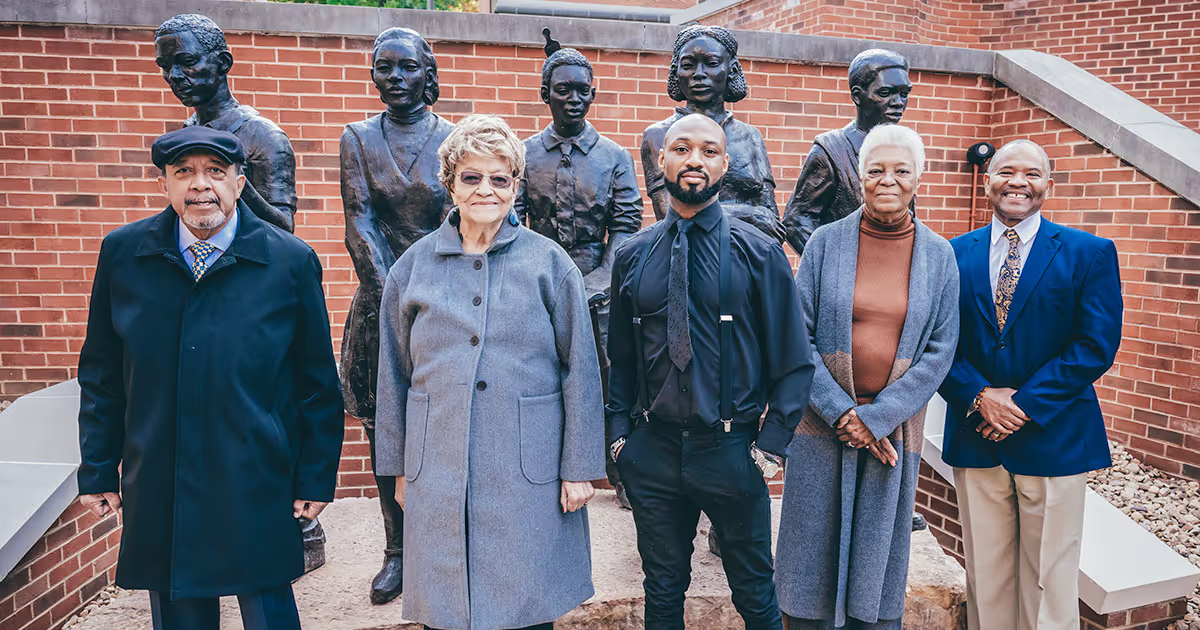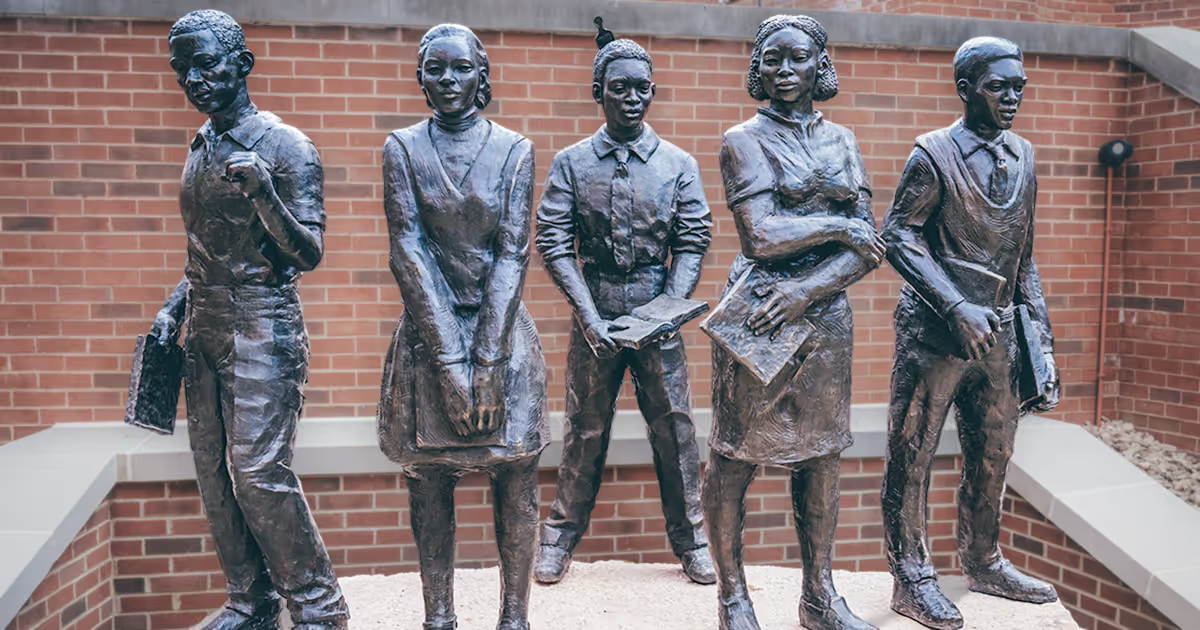Hundreds gathered this morning at East Tennessee State University for a special celebration to dedicate a new campus art installation honoring the five trailblazing students who integrated the university in the late 1950s.
The life-size bronze sculptures of Eugene Caruthers, Elizabeth W. Crawford, George L. Nichols, Mary Luellen Wagner and Clarence McKinney were unveiled during ETSU’s annual Homecoming festivities.
The monument stands as part of ETSU’s Borchuck Plaza, in front of the Charles C. Sherrod Library. Borchuck Plaza is home to the Memorial Fountain, which is also dedicated to these five pioneers in ETSU’s history.
Three of the five honorees — Crawford, Nichols and Wagner — attended the event, along with Robert McKinney, the son of Clarence McKinney.

The dedication ceremony featured remarks from ETSU alumni, students and university leaders, as well as guest speaker G.K. Butterfield, retired U.S. Congressman who represented North Carolina from 2004 to 2022.
“The impact of the five students we honor and memorialize today is profound,” said ETSU President Dr. Brian Noland. “Living here in these beautiful mountains, we often use the metaphor of ‘trailblazers’ to talk about individuals who lead the way with courage, vision and purpose. These five students were trailblazers in every sense of the word, helping chart a better future not only for our university but for our entire region.”
At the ceremony, artist Austen Brantley unveiled the name of the sculpture, The Path, underscoring both the collective journey and the distinct achievements of the five students — and those who would follow in their footsteps.





.jpg)
.avif)